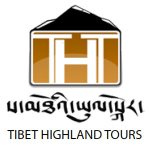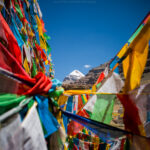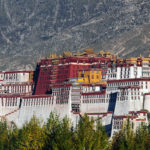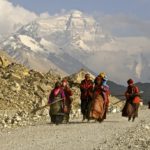Tibet information
Tibet is a most unusual and beautiful land. It is a place for the rugged adventurer as well as the spiritual wanderer which is held back in time and embraces many secrets. The majority of this land rests above 4000 meters (13,000 feet) and is partially surrounded by mountain ranges. The awe-inspiring Himalayas are the highest in the world. Nomads in Tiber remain much the same as they are centuries back. The monasteries are striving to find a place in a country that’s crashing into the twentieth century. The Tibetan people and their religion have been inseparable.
Geography and Climate
The geography of Tibet consists of the high mountains, lakes and rivers lying between Central, East and South Asia. Tibet is often called “the roof of the world”, comprising table-lands averaging over 4,950 meters above the sea with peaks at 6000 to 7500 m. It is bounded on the north and east by China Proper, on the west by the Kashmir Region of India and on the south by Nepal, India and Bhutan. Most of Tibet sits atop a geological structure known as the Tibetan Plateau, which includes the Himalaya and many of the highest mountain peaks in the world.
Tibet History Information
Humans inhabited the Tibetan Plateau at least twenty thousand years ago, and some archaeological data suggests humans may have passed through Tibet at the time India was first inhabited, half a million years ago.
The earliest Tibetan historical texts identify the Zhang Zhung culture as a people who migrated from the Amdo region into what is now the region of Guge in western Tibet. The Zhang Zhung is considered the original culture of the Bön religion.
In the mid-7th century, Songtsan Gampo established the unified Tibetan Empire, and married two princesses, one from China and one from Nepal. Tibet and Tang China fought repeatedly for control over the Silk Road during this time. Although the country was unified, it was seldom peaceful and between the 9th century and the mid-17th century it was often embroiled in turmoil. This period finally drew to a close when the Dalai Lama invited a tribe of Mongols to intervene. They gained military control of the region, but decided to stay, with the leader declaring him king. However, the Dalai Lama actually administered the country.
In the early 18th century, Tibet was again in turmoil, and seeking to replicate the success of the earlier means of restoring peace, the Dalai Lama invited another tribe of Mongols to take control. However, the emperor of Qing China was unhappy with this arrangement, and ordered an invasion. The Mongols were expelled, and the Chinese and Tibetans began a special relationship which was maintained until the end of the Qing dynasty.
The British invaded Tibet in 1904, while the Qing emperor carved out states from areas under Tibetan control in the north and east. With the overthrow of the Qing dynasty in 1911, Tibet declared independence from China under the authority of the 13th Dalai Lama and remained an isolated de-facto independent nation for over thirty years. Its borders were slightly larger than the current TAR and even incorporated portions of contemporary Qinghai, Sichuan and Yunnan.
In 1949, seeing that the Communists were gaining control of China, the Kashag expelled all Chinese connected with the Chinese government, over the protests of both the Kuomingtang and the Communists. The Chinese Communist government led by Mao Zedong which came to power in October lost little time in asserting a new Chinese presence in Tibet. In June 1950 the UK Government in the House of Commons stated that His Majesty’s Government “have always been prepared to recognize Chinese suzerainty over Tibet, but only on the understanding that Tibet is regarded as autonomous” In October 1950, the People’s Liberation Army invaded the Tibetan area of Chamdo, defeating sporadic resistance from the Tibetan army. In 1951, representatives of Tibetan authority, with Dalai Lama’s authorization, participated in negotiations in Beijing with Chinese government. It resulted in a Seventeen Point Agreement, which affirms China’s sovereignty over Tibet. The agreement was ratified in Lhasa a few months later.
Economy
The economy of Tibet is dominated by subsistence agriculture. Due to limited arable land, livestock rising is the primary occupation mainly on the Tibetan Plateau; among them are sheep, cattle, goats, camels, yaks, donkeys and horses. The main crops grown are barley, wheat, buckwheat, rye, potatoes, oats, rapeseeds, cotton and assorted fruits and vegetables. In recent years the economy has begun evolving into a multiple structure with agriculture and tertiary industry developing side by side.
Tibet’s GDP in 2008 was 39.6 billion Yuan. The Central Chinese government exempts Tibet from all taxation and provides 90% of Tibet’s government expenditure. In recent years Tibet’s tourism has expanded rapidly, especially after the finish of Qingzang Railway in July 2006. Tibet received 2.5 million tourists in 2006, including 150,000 foreigners. According to the Chairman of the Tibet Autonomous Region, Qiangba Puncog, Tibet’s economy has grown on average 12% per year from 2000 to 2006. The per capita GDP reached 10,000 RMB in 2006 for the first time in Tibet’s history.
Historical money of Tibet
The historical money of Tibet started in ancient times, when Tibet had no currency of its own. Bartering was common, gold was a medium of exchange, and shell money and stone beads were used for very small purchases. A few coins from other countries were also occasionally in use. Coins were first used in a more extensive way in the 17th century: these were silver coins supplied by Nepal. There were however various difficulties with this system. In 1763/64 and 1785 the first silver coins were struck in Tibet. In 1792 the first mass-produced silver coins were created under joint Chinese and Tibetan authority. Coins bearing Tibetan inscriptions only were subsequently replaced by issues, which had Chinese and Tibetan legends. This lasted until the 1830s. In 1840 purely Tibetan coinage was struck under Tibetan authority, and this coinage continued being made until 1954, with only two short interruptions when Sino-Tibetan coins were issued. In 1910 the Tibetan Government started producing a large range of copper and silver coins of different denominations, and in 1918 to 1921, gold coins were struck. Tibetan banknotes were first issued in 1913.
From 1955 to 1959 no more Tibetan coins were created, although banknotes were still being printed, and by 1959 all of the money was gradually being replaced with Chinese currency.
Language
Standard Tibetan, often called Central Tibetan, is the official language of the Tibet Autonomous Region of China. It is based on the speech of Lhasa, an Ü-Tsang dialect of Dbus aka Ü, one of the Central Tibetan languages. The written language is based on Classical Tibetan and is highly conservative.
The Tibetan language is generally classified as a Tibeto-Burman language of the Sino-Tibetan language family. Tibetan most closely resembles Burmese among the major languages of Asia.
Tibetan language is spoken in numerous regional dialects. Tibetan language is spoken throughout Tibetan plateau. It is also spoken in some parts of Bhutan, Nepal and in Northern India. Over 6 million people including Tibetans in exile speak Tibetan language.
Tibetan Buddhism
Tibetan Buddhism is the body of Buddhist religious doctrine and institutions characteristic of Tibet and certain regions of the Himalayas, including northern Nepal, Bhutan, and India (Arunachal Pradesh, Ladakh and Sikkim). It is also practiced in Mongolia and parts of Russia (Kalmykia, Buryatia, and Tuva) and Northeast China.
Tibetan Buddhism comprises many distinct schools, but is primarily divided into four main traditions: Nyingma, Kagyu, Gelug, and Sakya. All schools categorize their teachings into three “vehicles”: Hinayana, Mahayana, and Vajrayana, although some schools, the Gelug for example, consider Vajrayana a part of Mahayana. The Nyingma tradition classifies the corpus of Buddhist teachings into Nine Yanas, among the highest of which is known as Atiyoga or Dzogchen (Great Perfection).
Population
At the end of 2000, the total population in Tibet was 2.62 million. With diversity in terms of distribution, most people live in rural areas, and fewer in cities and towns. The population of the Tibetan nationality accounts for over 90% of the population, but that of the Han nationality and other ethnic groups is very small. Affected by nature, geographic conditions and climate, 80% of the population in Tibet is distributed mainly over the valley along the middle reaches of the Brahmaputra River valley and the deep valleys along three rivers (Lantsang River, Lujang River and Yangtse River) which are located in the eastern part of Tibet. There are few people in the northern part of the Qinghai-Xizang Plateau because of its harsh climate. The southeastern part of Tibet is covered by primeval forests; there population density is low, transportation is inadequate and other conditions unfavorable. In 2000, the population density of Tibet was only 2.1 persons per square kilometer.



